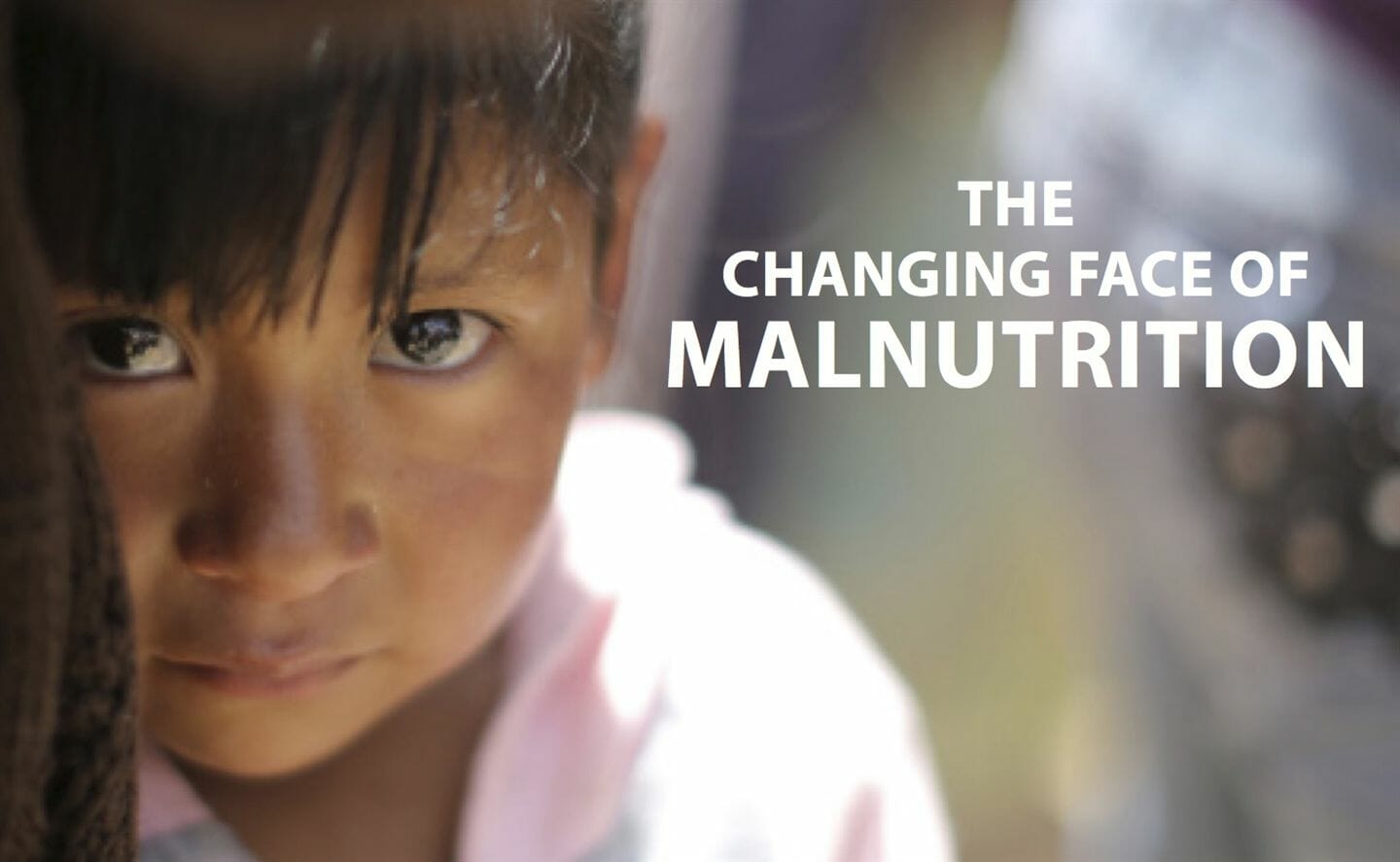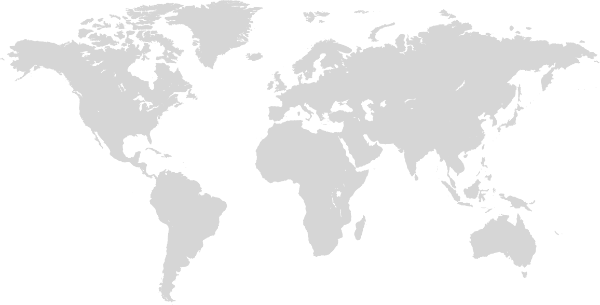The data is alarming, and heartbreaking: 805 million people go hungry every day1. Half the people on the planet are malnourished. Malnutrition touches nearly every country in some form.
The economic cost of malnutrition is in the trillions of dollars – 4 to 5 percent of the entire world’s gross domestic product2.
“It’s time to recast how we talk about malnutrition so we can shape partnerships and alliances with a comprehensive design of solutions and investments to address it,” said Dominic Schofield, director and senior technical advisor at the Global Alliance for Improved Nutrition (GAIN). “The interventions need to be evidence-based.”
To that end, GAIN launched the Malnutrition Mapping Project and created a comprehensive, interactive, digital Malnutrition Map (see example below), with support from Amway. The online tool, which was conceived by Amway, reveals the global burden of malnutrition in all its forms, from undernutrition to overweight and obesity.
Following the map’s unveiling March 31, 2015 Schofield and a panel of experts shared their perspectives on the project. Participating were:
Dr. Mandana Arabi, business platform and nutrition researcher at GAIN
Faheem Kahn, head of food and nutrition security at CARE™ USA
Audra Davies, Amway vice president of health, beauty and home product development
Jane Nelson, moderator, director of the Corporate Social Responsibility Initiative at the John F. Kennedy School of Government at Harvard University
Here are excerpts from the discussions.
Q: What is meant by the “double burden” of malnutrition?
“In nearly half of all countries, stunted growth and overweight/obesity now coexist.” – Dominic Schofield, GAIN
Dominic Schofield: We often characterize malnutrition as undernutrition happening in developing countries, but we’re also facing a massive burden of overweight and obesity – 1.4 billion people globally. Overweight and obesity puts a child at risk for a whole range of diseases later in life – diabetes, heart disease and certain cancers. In nearly half of all countries, stunted growth and overweight/obesity now coexist, and the multiple burdens linked to malnutrition are crippling health systems in rural and urban communities.
Dr. Mandana Arabi: Eliminating hunger is not just about lack of food but also focusing on the quality of nutrition. Addressing the issue of the double burden means that by taking care of undernutrition, we don’t actually cause over-nutrition by providing low-quality, high-calorie food content that doesn’t have all the nutrients needed.
Q: Why is this data important in the global malnutrition fight?
“That 800 million people go hungry every day is a notion that is despicable.” – Faheem Kahn, CARE USA
Faheem Kahn: Poverty is something that’s unjust in today’s world. That 800 million people go hungry every day is a notion that is despicable.
The amount of investment that goes into developing hunger programs is enormous, but a lot of times we miss the point. We’re not exactly sure how to get into things because we lack data at times.
When you look at the question of sustainable impact, unless you start talking about those long-term metrics like stunting, you’re always going to have only short-term impacts. That’s why I see real power in these data sets – they give us those metrics.
Using these data must be done carefully, however, and as a combination of private and public sectors plus the NGOs.
Dr. Mandana Arabi: You can make the data a very powerful advocacy tool, but then you have to build bridges. And what excites me about this project is that it is investment in building those bridges.
“It’s fantastic to hear a successful business leader talking about the fact that childhood nutrition data is important to them, because that means they will feed the information into their business.” – Dr. Mandana Arabi, GAIN
We all want to have affordable nutrition and services for everyone, including the most vulnerable in the populations. But there are disconnections there. The food that is available is not necessarily the food a nutritionist would formulate or recommend.
So once we are able to make the connections across the continuum – what the accommodations are, what products and services are available – then that would be success for everyone. That’s a really valuable goal for all of us to focus on, and this comes from using the same information, as the map allows.
It’s fantastic to hear a successful business leader like Amway talking about the fact that childhood nutrition data is important to them, because that means that they will feed the information into their business. Then the solutions will be adaptable to those investments.
Q: What can organizations do with the map that they weren’t able to do before?
Faheem Kahn: With the malnutrition map, we are able to superimpose those 45 indicators to get a more comprehensive picture. When you have a map that shows a high rate of stunting, for example, you can start superimposing onto that education factors, or the natural kinds of shocks and stresses that are hitting an area. In a country context you might have a basic framework, but the overlays show how to actually approach each community depending on the pressures faced by that community.
Dr. Mandana Arabi: Now we can bring together data from different sources and sectors that might not be connected in themselves – one set might be on agricultural yield from one culture, for example, another on climate from this region, and another on human livelihoods and childhood nutrition. Putting this together could actually give us the picture that will tell us what solutions could work. Or, where there are hot spots where we need to find some innovative solutions. Making the data meaningful and making those connections so that we know our investments are really paying off – that’s what the map can do, and that’s the exciting part.
Q: Can you give an example of how the map might help organizations?
“It would be great if a rights-based approach and a scientific evidence-based approach would completely align.” – Dr. Mandana Arabi, GAIN
Dr. Mandana Arabi: It would be great if a rights-based approach and a scientific evidence-based approach would completely align. From the rights-based approach you want to focus on the most vulnerable, most disadvantaged: women who need empowerment. And from the science and nutrition approach, we have evidence that women are able to make changes in the household nutrition even with small empowering investments. With the data you can meet different outcomes, not focusing narrowly on the health or on the child necessarily, but on something that has a much bigger meaning for society.
Faheem Kahn: If we actually had women engaging in and contributing to the farming systems, we’d have 150 million people immediately off the map in terms of eliminating hunger.
Q: How will the malnutrition map be used?
Dr. Mandana Arabi: No one company or public sector could have the capabilities and financial resources alone to develop a pathway to change. We need more examples of successful interaction between business and the public sector in co-developing or pre-competitively developing nutrition solutions. It could be anything from an information technology company that wants to develop an app to help people change their nutrition habits to a nutritional supplements maker – could they find one place where research questions could answer a lot of their R&D problems? GAIN and this new platform become the convener and trusted broker for answering those research questions and engaging with the scientific community that has the capacity to answer in a valid, neutral, objective manner.
Audra Davies: So often we think of malnutrition and the lack of available food in the context of developing countries, but as GAIN’s work emphasizes so beautifully, this is a critical issue in not just low-income countries but also in middle-income and high-income countries. The greatest opportunity around this work is the awareness, the education and the advocacy that we hope will come from it.
“This is a critical issue in not just low-income countries but also in middle-income and high-income countries.” – Audra Davies, Amway
Q: What is the role of business in reducing malnutrition?
Jane Nelson: Business leaders can play a much bigger role than we think in influencing policy about malnutrition. If business leaders can be making a case to ministers of finance and commerce that healthy populations are important for economic growth, then you can do some very important public policy engagement around the link between economic development, progress and competitiveness, and health and nutrition.
“Business has a role to play in the entire value chain.” – Jane Nelson, Harvard Kennedy School
Business has a role to play in the entire value chain, from working with the farmers to make sure the food is produced well but also that the farmers themselves don’t go hungry, and on the delivery side, communicating through retailers and distributors, public messaging and advertising the importance of nutrition and nutritious foods. We need to think more about making use of that whole integrated value chain.
Q: Why do you think education plays a part in improving malnutrition around the world?
Dr. Mandana Arabi: Nutritional literacy for school students is an underdeveloped area everywhere that we have the double burden. Nutritional literacy to make real changes in nutrition behavior has to come from not just the education systems, but also from the collective of us involved in working to eliminate malnutrition.
Faheem Kahn: Nutrition education is key at all levels, not just in relation to consumption. It’s also about water, safe hygiene, sanitation – all those things come into play.
Audra Davies:
I also would advocate for broader public health messaging on the role of nutrition in disease prevention and in long-term good health. I travel the world for our business, and it’s always remarkable to me the lack of understanding of the very basics of nutrition.
I would advocate for education, in all segments of the population, on how a good quality diet and supplementation where nutrients are missing can change an individual’s nutrition outlook.
1http://www.who.int/mediacentre/factsheets/fs311/en/, http://www.fao.org/3/a-i4030e.pdf
2Dominic Schofield, Global Alliance for Improved Nutrition, address at U.S. Chamber of Commerce March 31, 2015








